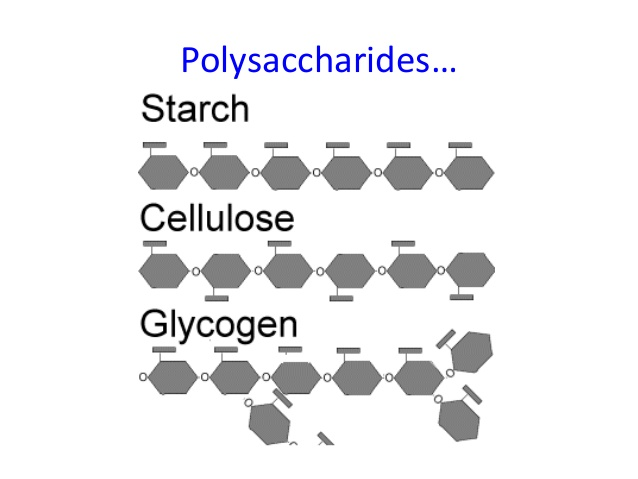Complex carbohydrates which have highly branched structures are known as polysaccharides. It is made up of the repeating units of the monosaccharides, which are attached by the glucosidic linkages. The number of sugar molecules which bonds together to make the larger molecules is represented by n. Polysaccharides are also known as glycans. Mainly, they are classified into two parts, homopolysaccharides, and heteropolysaccharides. Commonly three main polysaccharides are found in nature such as starch, cellulose, and the glycogen, and they have application in daily life.

Starch
Starch is present in all of the photosynthetic plants, and generally, it is found in the roots and the seeds of the plants. Glucose is synthesized by all of the plants and the extra glucose is stored in the form of starch. In the seeds of plants, it is found as granules. If these granules are heated in the presence of water, a colloidal suspension is obtained. By this process, two components are obtained that ae amylopectin, and amylose. It is glucan as it consists of glucose molecules only which are linked together.
Cellulose
For all the photosynthetic plants, cellulose is an important structural element of the cell wall. It is highly insoluble in water and has a fibrous nature. It is also a glucan formed by the combining of D-glucose units. However, the connection between these units is different from the glycogen, and starch and this connection is a beta linkage. This beta linkage confines the polysaccharides to a straight-chain form, so the structure is not helical. In this chain structure, hydroxyl groups are pointing outside. When two chains come close to each other, they stack on each other, as there is hydrogen bonding between the two hydroxyls.
Glycogen
Glycogen is exclusively made of the D-glucose units. It is also glucan and is reserved source of carbohydrates for the plants and animals. It has a similar structure to that of amylopectin but there is one exception, as it is highly branched. In this molecule, branching is more frequent almost they are present after every six units of glucose. Due to this reason, it behaves differently from the amylopectin. It is not compact and has a high molecular weight. Due to its unique structure, and formation, it has many important functions in plants and animals. For the cells of our body, it is a reserve for glucose. Due to its compact nature, it cannot diffuse off from the cell membrane.